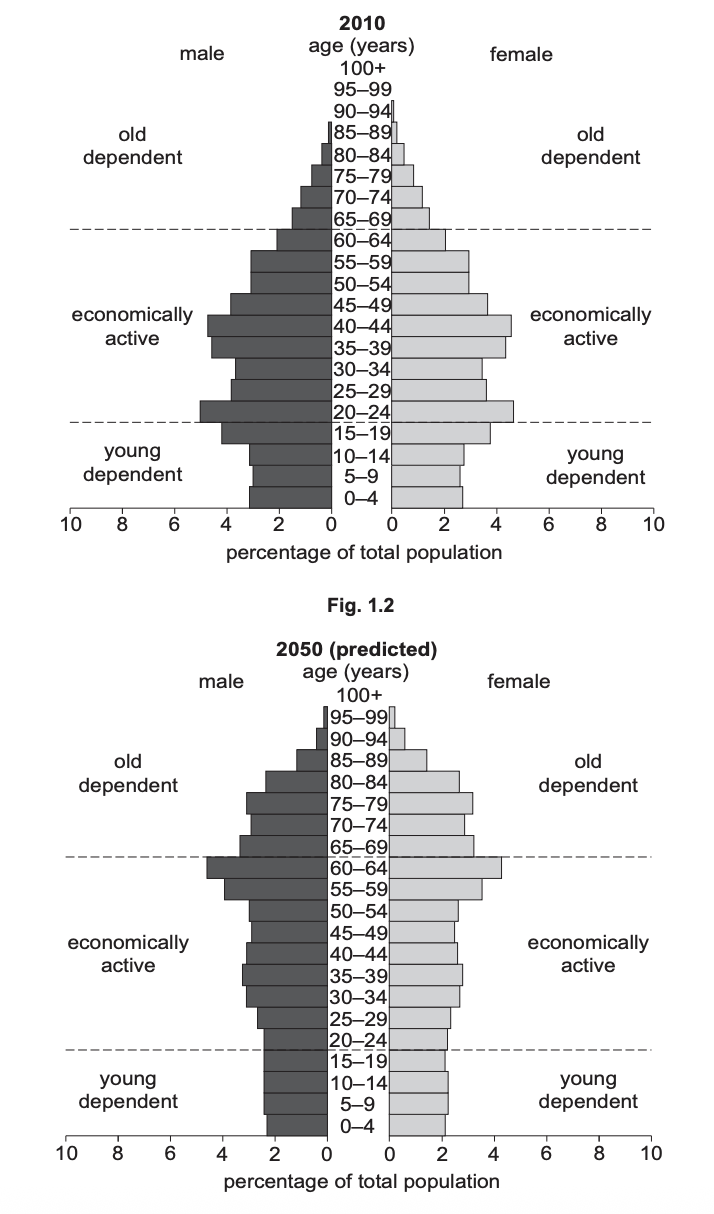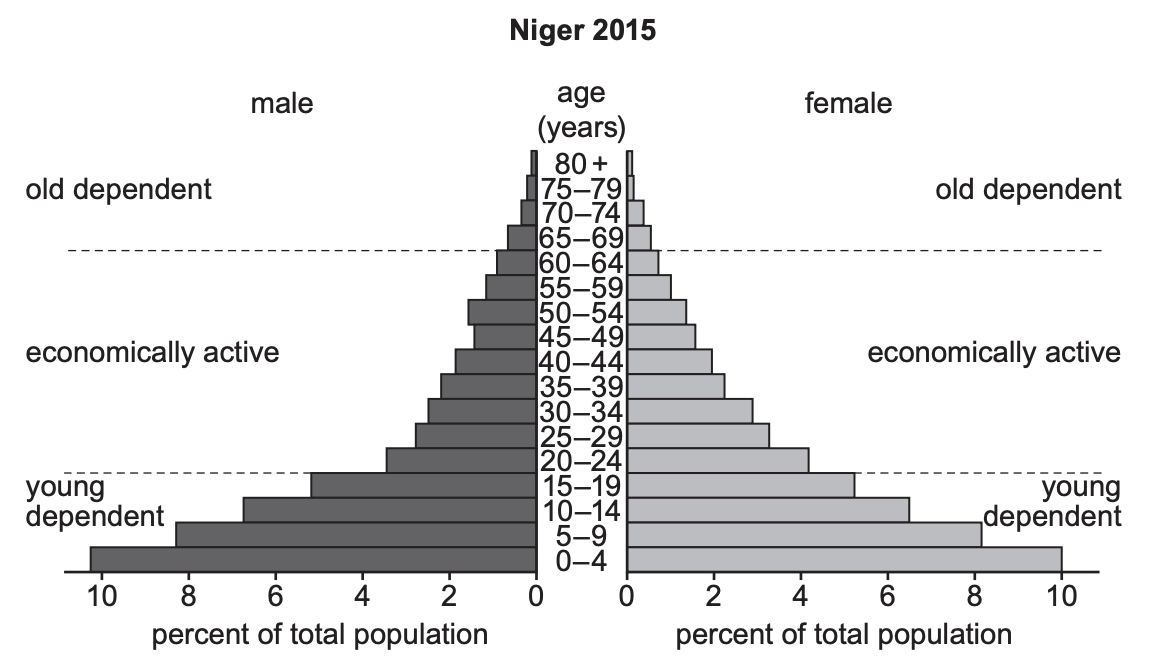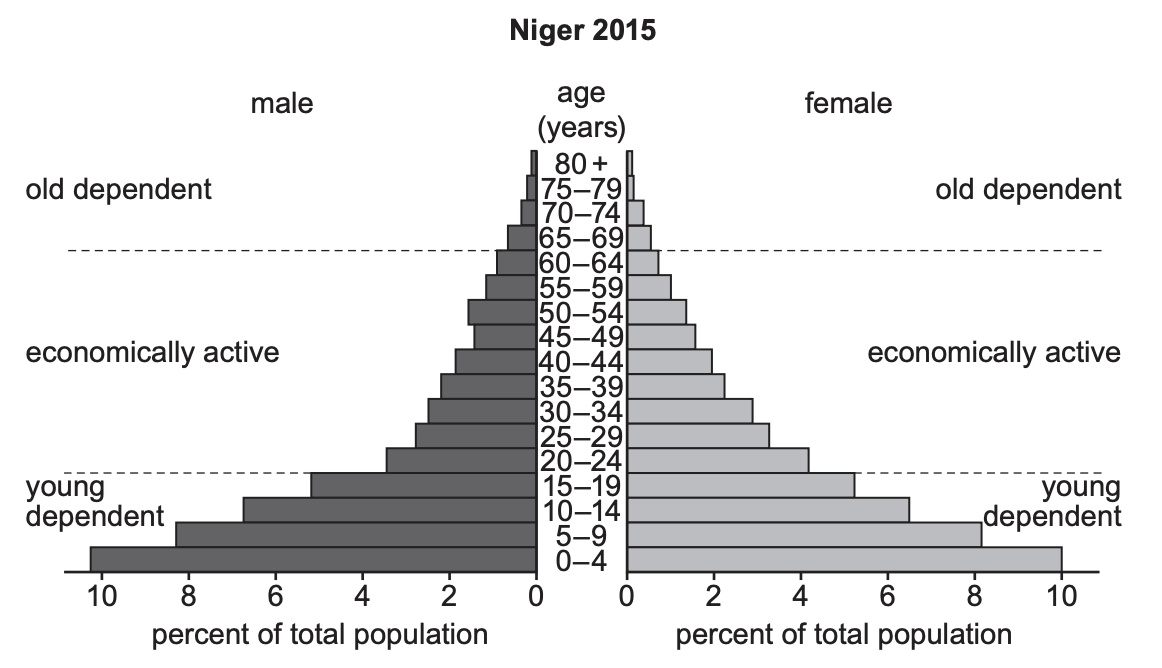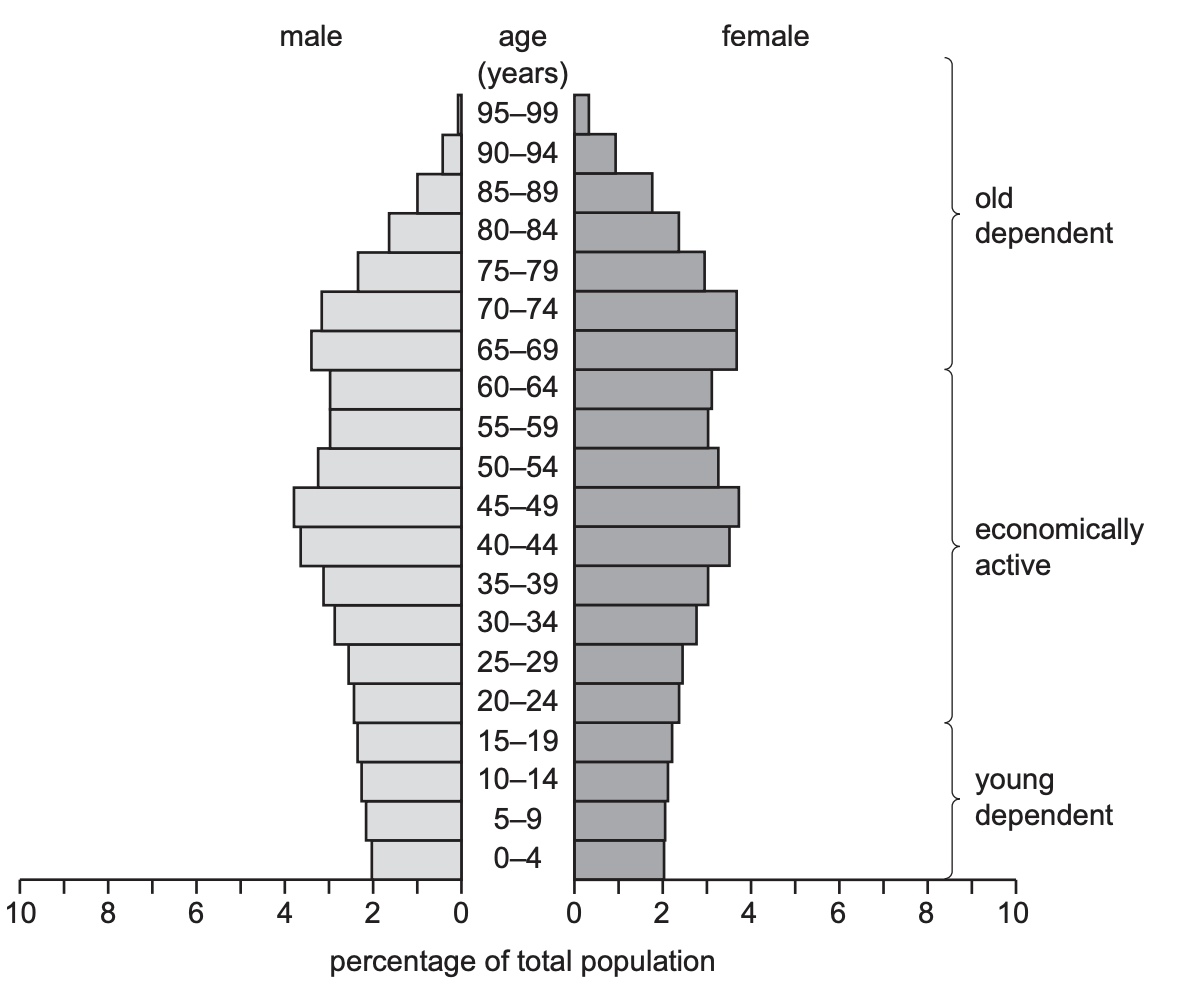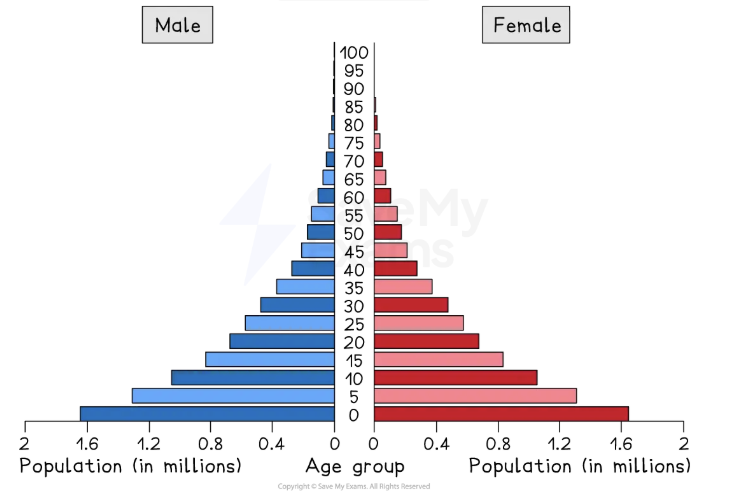Study Fig. 1, which shows the age structure of a number of countries.
Age Group | Percentage of Population (%) | |||||
|---|---|---|---|---|---|---|
| Country A | Country B | Country C | Country D | Country E | Country F |
65 and over | 18.3 | 4.1 | 5.5 | 13.2 | 3.1 | 17.3 |
15-64 | 63.0 | 59.1 | 61.6 | 70.3 | 69.3 | 67.6 |
0-14 | 18.7 | 36.8 | 32.9 | 16.5 | 27.6 | 15.1 |
Fig 1
Identify the country with the highest percentage of population aged 65 and over.
Identify the country with the lowest percentage of dependent population
Did this page help you?



